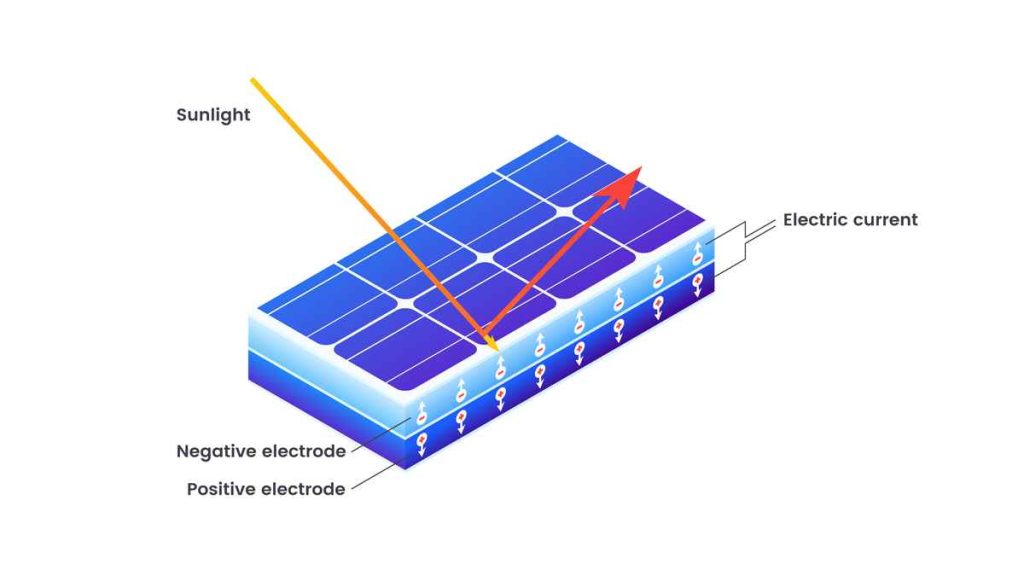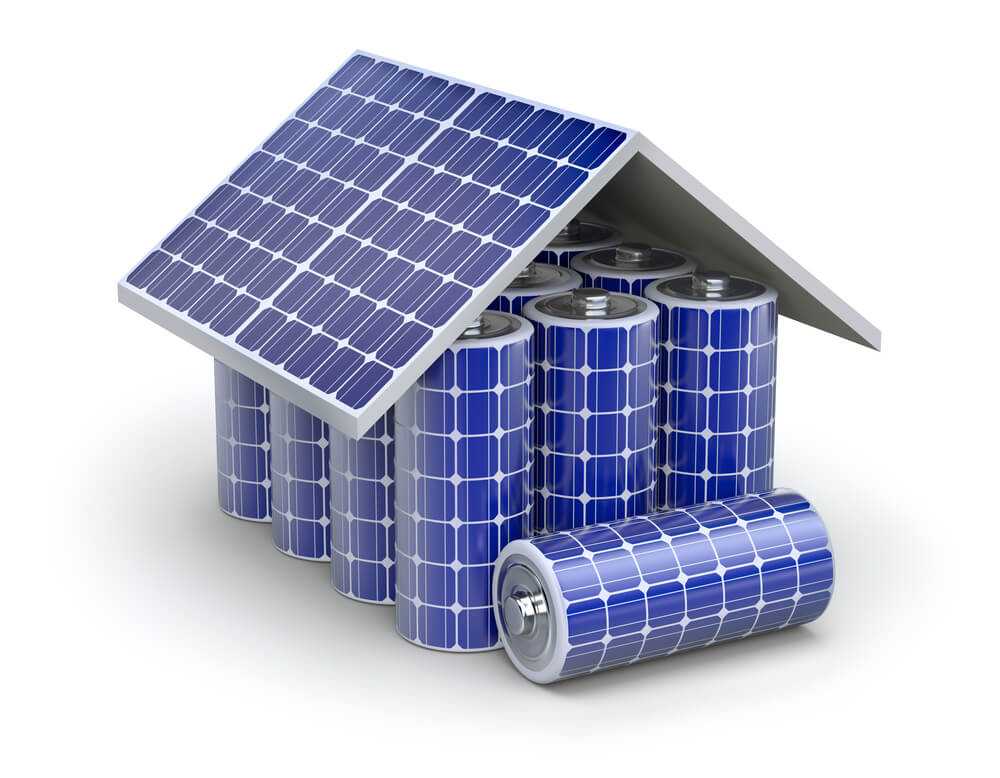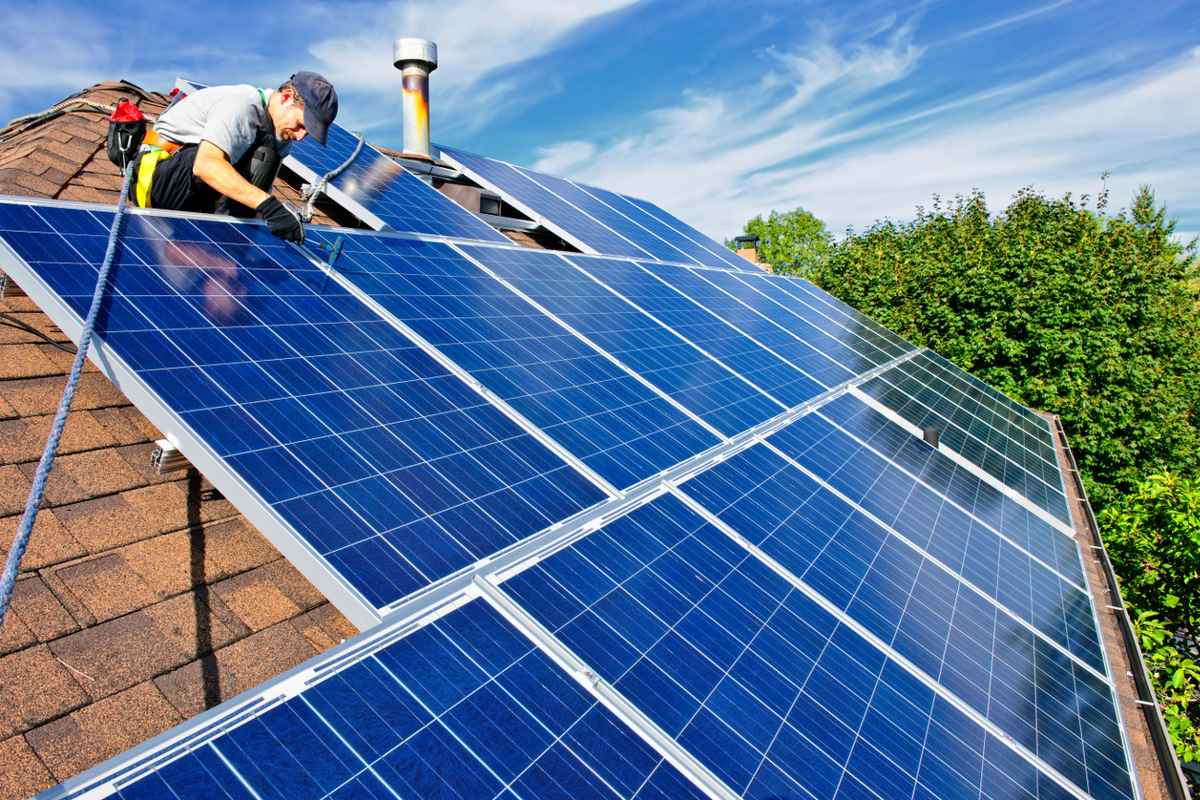Solar power is a truly remarkable technology that’s both simple and revolutionary. It allows us to harness the sun’s energy, which is a vast and renewable source of power, to generate electricity.
In this article, we’ll break down how solar power works and the idea behind solar technology.
How Solar Panels Work

The magic of solar power starts with solar panels. These panels are made up of many smaller units called solar cells which are usually made from silicon. Think of these cells as tiny, sophisticated sponges designed to catch sunlight.
When sunlight hits a solar cell, it sets off a fascinating process. The light contains tiny particles called photons. When these photons hit the silicon cells, they knock electrons free. Electrons are tiny particles that carry an electric charge.
This movement of electrons creates an electric current, which is essentially what electricity is.
Now, the electricity generated by solar panels is in a form called direct current (DC). Our homes and most appliances use alternating current (AC). So, how do we use this solar-generated electricity?
This is where a device called an inverter comes in. The inverter converts DC into AC, making the electricity suitable for household use.
Storing Solar Energy

One of the challenges with solar energy is that the sun isn’t always shining. To address this, we use solar batteries. These batteries store excess energy produced during sunny periods, which can be used at night or during cloudy days.
Benefits of Solar Power
Overall, solar power is incredibly beneficial. It’s a clean, renewable source of energy. Unlike burning fossil fuels, which release harmful pollutants and greenhouse gases, solar power doesn’t emit anything harmful.
It’s a big win for our planet, helping to combat climate change and air pollution.
The initial cost of installing solar panels can be high, but the long-term savings are significant. Solar panels reduce or even eliminate electricity bills, and many governments offer incentives for solar panel installation. Additionally, the technology is becoming more efficient and cheaper over time.
Advancements and the Future of Solar Technology

Solar technology has made significant strides in recent years, and these revolutionize how we capture and utilize the sun’s energy.
One of the most notable advancements is in the efficiency of solar panels. The efficiency of a solar panel refers to its ability to convert sunlight into electricity. Early solar panels had efficiencies of around 15%, but modern panels can exceed 22%.
This means more electricity can be generated from the same amount of sunlight.
Another exciting development is in the materials used for solar cells. While traditional solar cells are made from silicon, researchers are now exploring perovskite, a newer material that’s cheaper to produce and could potentially be more efficient than silicon.
This could lower the cost of solar panels significantly, making solar energy more accessible to a wider population.
Additionally, solar technology is not just limited to panels anymore. Innovations such as solar shingles and solar windows are emerging.
Solar shingles, which integrate solar cells directly into roof tiles, offer a more aesthetic and less obtrusive option for homes. Solar windows, on the other hand, can generate electricity while still allowing light to pass through which offers great potential for urban environments where space is limited.
These advancements in solar technology are not just improving efficiency and reducing costs; they’re also expanding the possibilities of where and how solar energy can be integrated into our daily lives. As we continue to innovate, solar technology stands at the forefront of a sustainable energy revolution.
Conclusion
Solar power is a straightforward yet ingenious way to harness the sun’s energy. It’s clean, renewable, and increasingly affordable.
As technology advances, solar power is set to play a significant role in our energy future. At this point, it’s not just about saving money; it’s about building a sustainable and healthier world.
